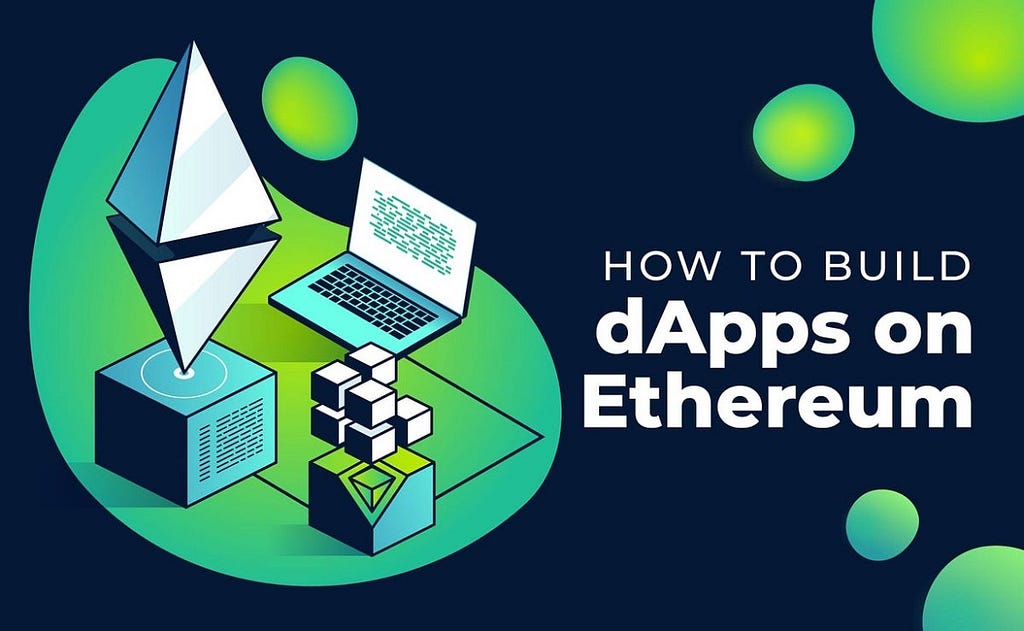
Introduction to Decentralized Applications (dApps) on Ethereum
In the rapidly evolving world of blockchain technology, Decentralized Applications (dApps) have emerged as a game-changing innovation. Ethereum, a pioneering blockchain platform, has played a pivotal role in the rise of dApps by providing a robust infrastructure for building and deploying these decentralized applications. As businesses and individuals seek to harness the power of blockchain, understanding dApps development on Ethereum has become increasingly important.
What are dApps?
Decentralized Applications (dApps) are software applications that run on a decentralized network, such as the Ethereum blockchain. Unlike traditional applications that rely on centralized servers, dApps are powered by smart contracts and distributed across multiple nodes in the network. This decentralized architecture offers several advantages, including increased security, transparency, and resilience against censorship or single points of failure.
Key Components of a dApp
To build a dApp on Ethereum, you need to understand the following key components:
1. Smart Contracts: Smart contracts are self-executing contracts with the terms of the agreement directly written into code. They serve as the backbone of dApps, defining the rules and automating the execution of transactions.
2. Ethereum Virtual Machine (EVM): The EVM is a runtime environment that allows Ethereum nodes to execute smart contracts. It ensures that all nodes in the network execute the same instructions and reach a consensus.
3. Decentralized Storage: dApps often use decentralized storage solutions like IPFS (InterPlanetary File System) to store data off-chain while maintaining the benefits of decentralization.
4. User Interface: The user interface (UI) of a dApp is typically built using web technologies like HTML, CSS, and JavaScript. It serves as the front-end for users to interact with the dApp’s functionality.
Steps to Build a dApp on Ethereum
Building a dApp on Ethereum involves several steps, from setting up the development environment to deploying the dApp to the Ethereum network. Here’s a high-level overview of the process:
1. Set up the development environment: Install necessary tools like Node.js, npm, Truffle framework, and Ganache.
2. Create a new Truffle project: Use the Truffle framework to create a new project structure for your dApp.
3. Write the smart contract: Use Solidity, a contract-oriented programming language, to write the smart contract that defines the rules and logic of your dApp.
4. Test the smart contract: Write tests to ensure the correctness and functionality of your smart contract.
5. Deploy the smart contract: Use Truffle to deploy your smart contract to the Ethereum network, either a local development network or the main Ethereum network.
6. Build the front-end: Develop the user interface using web technologies like HTML, CSS, and JavaScript. Connect the front-end to the deployed smart contract using libraries like Web3.js or Ethers.js.
7. Test the dApp: Thoroughly test your dApp to ensure it functions as expected and handles edge cases properly.
8. Deploy the dApp: Finally, deploy your dApp to a hosting service or decentralized storage solution like IPFS.
Benefits of Building dApps on Ethereum
Building dApps on Ethereum offers several benefits:
1. Decentralization: Ethereum’s decentralized network ensures that dApps are not controlled by a single entity, promoting transparency and trust.
2. Immutability: Transactions and data stored on the Ethereum blockchain are immutable, meaning they cannot be altered or deleted.
3. Programmability: Ethereum’s smart contracts enable programmable and self-executing logic, allowing for the creation of complex applications.
4. Interoperability: dApps built on Ethereum can interact with each other and share data, fostering an ecosystem of interconnected applications[2].
5. Global accessibility: Ethereum-based dApps are accessible worldwide, as long as users have an internet connection and a compatible wallet[1].
Challenges and Considerations
While building dApps on Ethereum offers many benefits, there are also challenges and considerations to keep in mind:
1. Scalability: The Ethereum network can face scalability issues due to the high volume of transactions and the need for all nodes to process each transaction.
2. Gas fees: Users need to pay gas fees to execute transactions on the Ethereum network, which can fluctuate based on network congestion.
3. Security: Smart contracts must be carefully audited and tested to prevent vulnerabilities that could lead to losses or exploits.
4. User experience: Designing intuitive and user-friendly interfaces for dApps can be challenging, as users need to interact with wallets and manage gas fees.
Conclusion
Building dApps on Ethereum presents an exciting opportunity for businesses and developers to leverage the power of blockchain technology. By understanding the key components, following the steps outlined, and addressing the challenges, you can create innovative and impactful decentralized applications. As the Ethereum ecosystem continues to evolve, the potential for dApps to transform various industries is immense.
If you’re looking to build a dApp on Ethereum or explore the possibilities of blockchain technology, consider partnering with a reputable Ethereum development company like Codezeros. Their team of experienced blockchain developers can guide you through the process and help you bring your dApp idea to life.
How to build Decentralized Applications (dApps) on Ethereum was originally published in The Capital on Medium, where people are continuing the conversation by highlighting and responding to this story.








